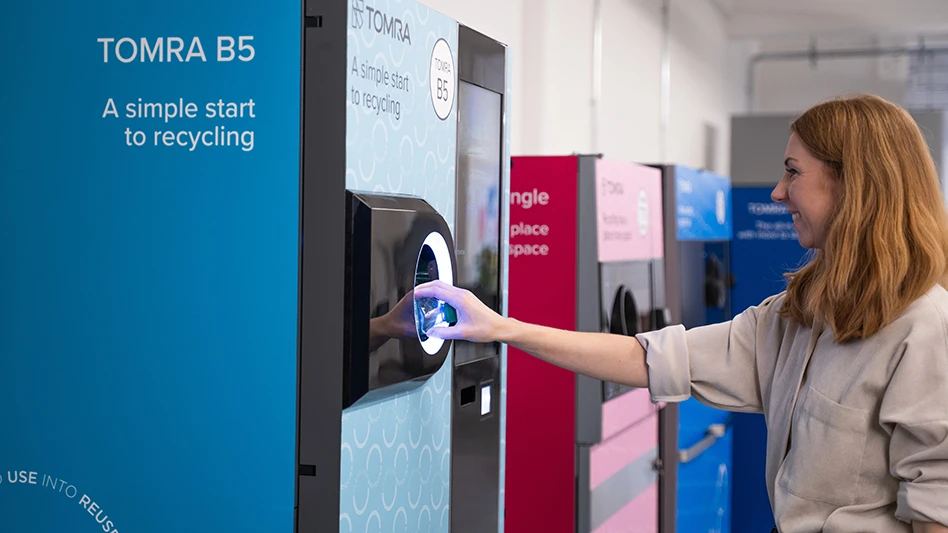The British company JCB is touting its Teletruk, which is designed to provide forklift users with a telescopic boom that allows far better forwards visibility of the load than vertical channels and chains of a conventional mast. Fully lowered, a three-stage mast can present poor forward visibility to the operator.
The Teletruk is a small machine with conventional lift capacities, but with a telescopic arm upon which various attachments can be changed quickly.
The Teltruck also incorporates design changes intended to improve operational safety. (To watch a video of Teltruck in operation, click here.)
In discussing the product, JCB says two facets contribute to increasing safety. The first is to ensure that forklifts operate in clearly designated work zones, alongside but separate to pedestrian-only zones. The second is to reduce or eliminate the need for forklifts to travel across blind corners that might conceal an pedestrian.
 While these issues are addressed in many warehouses, in external settings pedestrians are more likely to be in the wrong place at the wrong time.
While these issues are addressed in many warehouses, in external settings pedestrians are more likely to be in the wrong place at the wrong time.
The growing interest in using these skid-steer loaders in an external environment led Sims Metal Management to purchase 22 new JCB Teletruk forklift trucks for use at its End of Life Vehicle depollution facilities in the United Kingdom.
The TLT 35D machines have been designed to meet Sims’ safety requirements. The requirements include twin-front wheels for stability, long forks on a rotator attachment for greater flexibility in vehicle handling and an in-cab screen. The screen displays images from two cameras located at the rear of the cab to ensure maximum vision when reversing and maneuvering.
Sims Metal Management processes nearly 400,000 end-of-life vehicles per year in the U.K.
John Mitchell, JCB industrial markets manager, says, "The JCB Teletruk is designed to lift the same loads as conventional masted counterbalanced forklifts. However, the telescopic arm allows attachments to be changed easily and quickly. This means that one Teletruk can do a number of jobs, and does not have to be assigned to just one. For example, a conventional forklift with a bale clamp will lift only bales. For work with forks another machine will have to be on site.
"Additionally there is a need to operate with shovels for loose loads. But a shovel works very poorly indeed when fitted to a conventional masted forklift. For one thing, the shovel sits tight against the mast channels and lifting chains. Contamination is an ever-present certainty."
Paul Colledge, Sims group purchasing controller, says "Safety of our employees is our top priority. So when the time came to review our forklift truck requirements back in 2005, although we knew we wanted a fork-truck with better stability and greater versatility, it was imperative that the design included the best possible safety features to ensure the safety of both the operator and employees in the immediate vicinity."
He adds, “We contacted JCB and worked closely with the JCB in-house design team to produce the required operational and safety specifications. It is testament to their expertise that we were able to produce what we believe to be the safest bespoke forklift truck on the market.
“Although the Teletruk was designed with ELV vehicle depollution in mind, such is its versatility, we have deployed one for use in our fridge recycling plant in Newport, where we are equally delighted with its performance,” Colledge adds.
For more information on the Teletruk or other products from JCB, visit www.jcb.com.
Latest from Recycling Today
- ReMA urges open intra-North American scrap trade
- Axium awarded by regional organization
- China to introduce steel export quotas
- Thyssenkrupp idles capacity in Europe
- Phoenix Technologies closes Ohio rPET facility
- EPA selects 2 governments in Pennsylvania to receive recycling, waste grants
- NWRA Florida Chapter announces 2025 Legislative Champion Awards
- Goldman Sachs Research: Copper prices to decline in 2026





